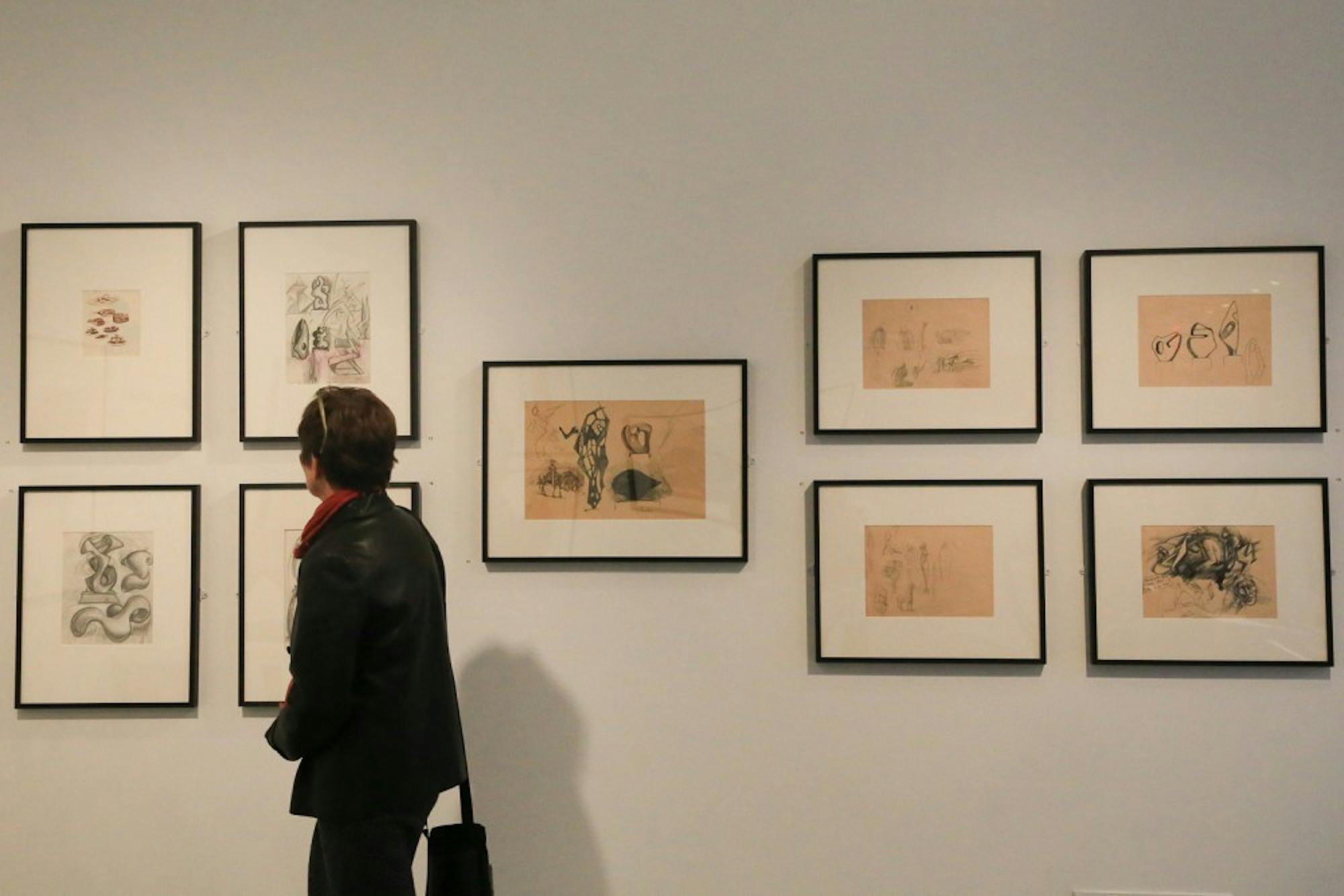With the Strauss Gallery’s transparent glass wall facing the bustle of students making their way to various classes and activities, the gallery’s exhibit of Allan Houser’s drawings and small sculptures immerses viewers in the works of Allan Houser, one of the 20th century’s most prominent Native American artists.
The exhibit’s variety of mediums highlights Houser’s broad mastery. Materials include charcoal, bronze, wood, graphite and ink.
Subjects range from simple sketches to the beautifully fashioned “Mother and Child” wood piece, which evokes a sense of fluidity and togetherness. While “Mother and Child” is common theme throughout art, Houser’s interpretation is unique because he sculpted the mother figure and child figure from the same piece of wood, acknowledging the relationship’s intertwined and connected nature and creating a sense of belonging.
Another piece, titled “Abstracted Figure Studies, Non-Objective Forms,” was created in graphite and ink on paper. The sketches feature straight-edged shapes on the right and more abstract, amorphous pieces on the left.
Upon further inspection, fragments of Houser’s everyday life appear in the exhibit. In the margins of one of his sketches, there is a note, hastily jotted down in black marker, about an appointment. “Collector from Tulsa here, Sat. 4:00 p.m.,” it reads. The careful selection of these pieces displays Houser’s talent as an artist while also offering a perspective into his life.
Houser’s Native American heritage and native desert landscapes influence his art. Native American themes and elements of the earthy-hued scenery peek through many of his drawings, yet his works show modern techniques.
“[Houser’s] approach and artworks focused on the broader aesthetics of 20th century modernism,” Allan Houser Foundation curator of collections David Rettig said. “He was instrumental and influential in changing perceptions about Indian Art.”
Studio art department director of exhibitions Gerald Auten and Hood Museum senior curator of collections Katherine Hart hand-selected the works from the many left behind in Houser’s Santa Fe home.
In Houser’s home, Auten said, they found thousands of pieces.
“He was constantly drawing and sketching,” he said.
The exhibit displays a selection of about 20 drawings and miniature versions of larger sculptures and creates a collection both representative and personal, and in line with Houser’s diverse interests and styles.
Houser’s works, both in this exhibit and displayed elsewhere on campus, are relevant to the College, studio art intern Sean Hammett ’14 said.
“Houser is an amazing artist,” Hammett said. “I think it’s pretty incredible that we have such an extensive collection here at Dartmouth, an institution that’s trying to take pride in its Native American heritage.”
A member of the Warm Springs Chiricahua Apache tribe, Houser was a bronze sculptor, stone-carver, painter, a 1979 Dartmouth artist-in-residence and a children’s book illustrator. He was the first in his family to be born out of captivity, after tribe members were forced out of Arizona and New Mexico into prison installments in Florida, Alabama and Oklahoma.
Houser has held various teaching positions and commissions, and received the National Medal of Arts from President George H.W. Bush in 1992. Today, collections across the country, from the U.S. Mission at the United Nations in New York to the Institute of American Indian Arts Museum in Santa Fe, display his artwork.
The exhibit will be on display through Nov. 23.




